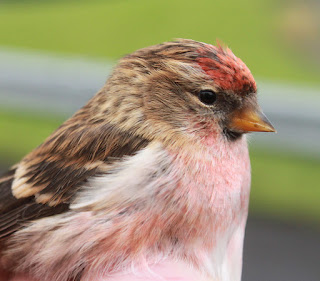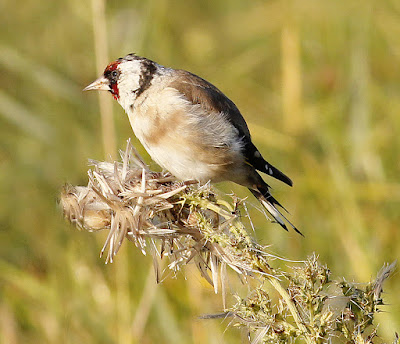Princeton University Press asked if Another Bird Blog would like to take a look at a book due for publication in January 2016.
The book is entitled “Better Birding”, the authors George Armistead and Brian Sullivan. George Armistead is events coordinator at the American Birding Association and has led birding tours on seven continents. Brian Sullivan is the photographic editor for Birds of North America Online, author of numerous papers on bird identification and the recent co-author of The Crossley ID Guide.
It comes then as no surprise that “Better Birding” is unashamedly directed towards a North American audience. Yet because the book is devoted to better ID techniques of bird families shared across the Northern Hemisphere or vagrant species which show up on either side of the Atlantic Ocean, many of the chapters contain pages of undoubted interest to a UK audience.
There is a 15 page Introduction to “Better Birding” which contains pages on understanding the basics of bird watching, including rarities, bird calls and sounds, moult, taxonomy and the concept of separate species. There is another heroic attempt to explain the difference between a “birder” and a “bird watcher”. I found that much of the introductory section contained information which has been repeated many, many times in books about birds by numerous different authors. The subtitle tells us the book contains “tips, tools and concepts” which make for better birding in the field, suggesting that it is suitable for several levels of birding experience. If so I suspect that many readers would find a good deal of the Introduction both familiar and superfluous and not read it, but instead move quickly to the meat of the book.
The authors explain how they decided the major content of the book. At first glance it appears to be an eclectic and quite random list of species but missing out obvious candidates for a book focused on ID; for instance, warblers, small shorebirds and the numerous brown sparrows of North America do not feature. Apparently the ones chosen fit three criteria: 1) ones that allowed the building of core birding skills 2) subjects that the authors considered required a fresh approach, or 3) some that the authors thought might especially fit the format of the book.
So ‘Better Birding’ doesn’t offer a comprehensive field guide to every species. It is more an ID guide which discusses and illustrates some of the more interesting, challenging or less glamorous groups of birds that a birder or bird watcher might wish to consider in more detail. The authors should be congratulated in sticking to their chosen parameters and not falling into the trap of producing yet another full field guide to North American birds but instead focusing on/singling out a number of bird groups worthy of special mention. After all, warblers and small shorebirds usually receive more than their fair share of attention.
The book works extremely well in respect of its chosen contents when considering my list below which details the 270 pages of 9 Chapters devoted to:
Waterbirds - pages which encompass loons/divers, swans and the complexities of white herons.
Coastal Birds - eiders, murrelets and pacific cormorants.
Seabirds - explores the similarities or otherwise of Northern Gannet and boobies together with pages on tropical terns, and also petrels/gadflys.
Large Shorebirds looks at the closely related curlews - Whimbrel, Bristle-thighed Curlew and Long-billed Curlew, together with a further section about godwits.
Skulkers focuses on a group of sparrows which can be both hard to see and to identify - Le Conte’s, Nelson’s, Saltmarsh and Seaside and also tackles four small wrens - Marsh, House, Winter, Pacific and Sedge.
Birds of Forest and Edge. This chapter looks at the elusive accipiters (hawks) and the difficulties presented by streaky, reddish/brown American Rosefinches. Meanwhile, Aerial Insectivores highlights high-flying swifts for closer scrutiny.
Night Birds. Nocturnal species like screech owls and nighthawks present unique difficulties for diurnal birders.
Finally, a 50 page chapter covers birds of Open Country and includes black corvids, kingbirds, pipits, longspurs and cowbirds.
The illustrations in Better Birding take the form of 850 colour photographs and a handful of maps. The layout of the pages is highly effective and the illustrations are almost without exception of great quality and placed within the text to good effect. The many photographs are impressive, a number of them spectacular, and as we might expect from someone who co-authored the Crossley Guide, show birds in real time and in real habitats rather than line drawings. A number of composite pictures show similar species on a shared canvas, a now familiar technique that works to the readers’ advantage when studying plates which depict eiders, petrels and shearwaters in flight across the ocean.
As a UK birder I found the chapter on eiders particularly useful as it includes the four species of eider which occur in the UK - Common Eider, King Eider, Spectacled Eider and Steller’s Eider. Likewise, the pages which include a discussion around ID’ing the four godwits of Marbled, Hudsonian, Black-tailed and Bar-tailed make a useful contribution to my library.
The accounts of pipits cover Red-throated Pipit, Sprague’s Pipit and American Pipit and quite rightly include reference to the vagrancy occurrences in North America of Pechora Pipit, Olive-backed Pipit, Siberian Pipit and Tree Pipit. I can’t agree however that our UK Tree Pipit is “nondescript”!
The book’s title might suggest that “Better Birding” is aimed at novice birders; I thought it highly suitable for mainstream bird watchers but also for more experienced birders who take their ID prowess seriously. The book includes a large number of North American species and groups of birds which often require a good deal of effort in the field coupled with an element of birding experience and skill. Studying this book may well move those birding skills and understanding up a notch or two in readiness for future challenges when a birder finds themselves a tick, or better still a rarity for others to enjoy.
For UK birders there is much in the book to read and digest, not least the fine sets of photographs which depict several species we see on rare occasions only.















































.jpg)














